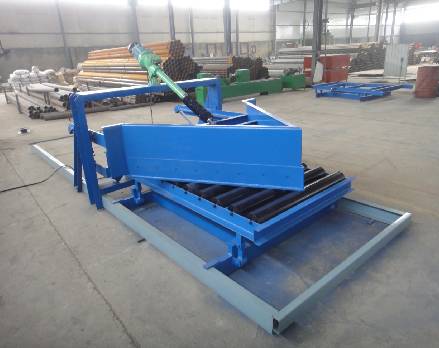 Afrikaans
Afrikaans  Albanian
Albanian  Amharic
Amharic  Arabic
Arabic  Armenian
Armenian  Azerbaijani
Azerbaijani  Basque
Basque  Belarusian
Belarusian  Bengali
Bengali  Bosnian
Bosnian  Bulgarian
Bulgarian  Catalan
Catalan  Cebuano
Cebuano  Corsican
Corsican  Croatian
Croatian  Czech
Czech  Danish
Danish  Dutch
Dutch  English
English  Esperanto
Esperanto  Estonian
Estonian  Finnish
Finnish  French
French  Frisian
Frisian  Galician
Galician  Georgian
Georgian  German
German  Greek
Greek  Gujarati
Gujarati  Haitian Creole
Haitian Creole  hausa
hausa  hawaiian
hawaiian  Hebrew
Hebrew  Hindi
Hindi  Miao
Miao  Hungarian
Hungarian  Icelandic
Icelandic  igbo
igbo  Indonesian
Indonesian  irish
irish  Italian
Italian  Japanese
Japanese  Javanese
Javanese  Kannada
Kannada  kazakh
kazakh  Khmer
Khmer  Rwandese
Rwandese  Korean
Korean  Kurdish
Kurdish  Kyrgyz
Kyrgyz  Lao
Lao  Latin
Latin  Latvian
Latvian  Lithuanian
Lithuanian  Luxembourgish
Luxembourgish  Macedonian
Macedonian  Malgashi
Malgashi  Malay
Malay  Malayalam
Malayalam  Maltese
Maltese  Maori
Maori  Marathi
Marathi  Mongolian
Mongolian  Myanmar
Myanmar  Nepali
Nepali  Norwegian
Norwegian  Norwegian
Norwegian  Occitan
Occitan  Pashto
Pashto  Persian
Persian  Polish
Polish  Portuguese
Portuguese  Punjabi
Punjabi  Romanian
Romanian  Russian
Russian  Samoan
Samoan  Scottish Gaelic
Scottish Gaelic  Serbian
Serbian  Sesotho
Sesotho  Shona
Shona  Sindhi
Sindhi  Sinhala
Sinhala  Slovak
Slovak  Slovenian
Slovenian  Somali
Somali  Spanish
Spanish  Sundanese
Sundanese  Swahili
Swahili  Swedish
Swedish  Tagalog
Tagalog  Tajik
Tajik  Tamil
Tamil  Tatar
Tatar  Telugu
Telugu  Thai
Thai  Turkish
Turkish  Turkmen
Turkmen  Ukrainian
Ukrainian  Urdu
Urdu  Uighur
Uighur  Uzbek
Uzbek  Vietnamese
Vietnamese  Welsh
Welsh  Bantu
Bantu  Yiddish
Yiddish  Yoruba
Yoruba  Zulu
Zulu The Importance of Drum Pulley Lagging in Industrial Applications and Maintenance Practices
Understanding Drum Pulley Lagging Importance and Benefits
Drum pulleys are essential components in various industrial applications, especially in conveyor systems. They are responsible for transmitting power and motion in a controlled manner, facilitating the movement of materials across different processes. However, the performance of a drum pulley can significantly be enhanced by integrating lagging, a process that involves covering the surface of the pulley with a material designed to improve grip, reduce wear, and enhance efficiency. This article explores the importance and benefits of drum pulley lagging.
What is Drum Pulley Lagging?
Lagging refers to the application of a layer of material—often rubber or specialized composite—to the surface of a drum pulley. This layer serves a multitude of purposes, from improving friction to protecting the underlying metal components from wear and environmental factors. Lagging can be applied to various types of pulleys, including those found in mining, manufacturing, and material handling sectors.
Improved Grip and Traction
One of the primary benefits of lagging is its ability to enhance grip and traction between the pulley and the conveyor belt. A well-lagged drum pulley significantly reduces slippage, ensuring that the belt moves smoothly and efficiently. This improvement in grip not only enhances the overall performance but also minimizes the risk of belt damage, which can lead to costly downtime and maintenance. In applications where heavy loads are transported, the importance of ensuring maximum friction between the pulley and the belt cannot be overstated.
Protection Against Wear and Tear
drum pulley lagging

Drum pulleys undergo significant stress during operation, leading to wear and tear on the surface. By applying lagging, operators can extend the lifespan of the pulley. The lagging material absorbs a portion of the impact and friction, protecting the underlying metal from degradation. This protection is critical in harsh environments where dust, moisture, and abrasive materials can accelerate wear. As a result, lagging not only enhances durability but also reduces repair and replacement costs over time.
Noise and Vibration Reduction
Another notable advantage of drum pulley lagging is its role in noise and vibration reduction. The rubber or composite materials used in lagging can dampen vibrations that occur during operation, which can lead to excessive noise levels in industrial settings. By minimizing these vibrations, lagging contributes to a more pleasant working environment, and it can also help protect sensitive equipment from potential damage caused by vibrations.
Customization and Versatility
Lagging materials come in a variety of types, thicknesses, and textures, allowing for customization based on specific operational needs. Industries can tailor lagging solutions to match the requirements of their systems, enhancing performance in unique applications. Whether for handling heavy-duty loads or ensuring seamless operation in a lighter, more agile setup, the versatility of lagging materials makes them an ideal choice.
Conclusion
In conclusion, drum pulley lagging plays a vital role in improving the efficiency and longevity of conveyor systems. By enhancing grip, reducing wear, minimizing noise, and offering customization options, lagging not only benefits the pulleys but positively impacts the entire operational process. For businesses seeking to optimize their material handling systems, investing in high-quality drum pulley lagging offers both immediate and long-term advantages. As industries continue to evolve, the role of drum pulley lagging will remain critical in achieving operational excellence.
-
Revolutionizing Conveyor Reliability with Advanced Rubber Lagging PulleysNewsJul.22,2025
-
Powering Precision and Durability with Expert Manufacturers of Conveyor ComponentsNewsJul.22,2025
-
Optimizing Conveyor Systems with Advanced Conveyor AccessoriesNewsJul.22,2025
-
Maximize Conveyor Efficiency with Quality Conveyor Idler PulleysNewsJul.22,2025
-
Future-Proof Your Conveyor System with High-Performance Polyurethane RollerNewsJul.22,2025
-
Driving Efficiency Forward with Quality Idlers and RollersNewsJul.22,2025





























